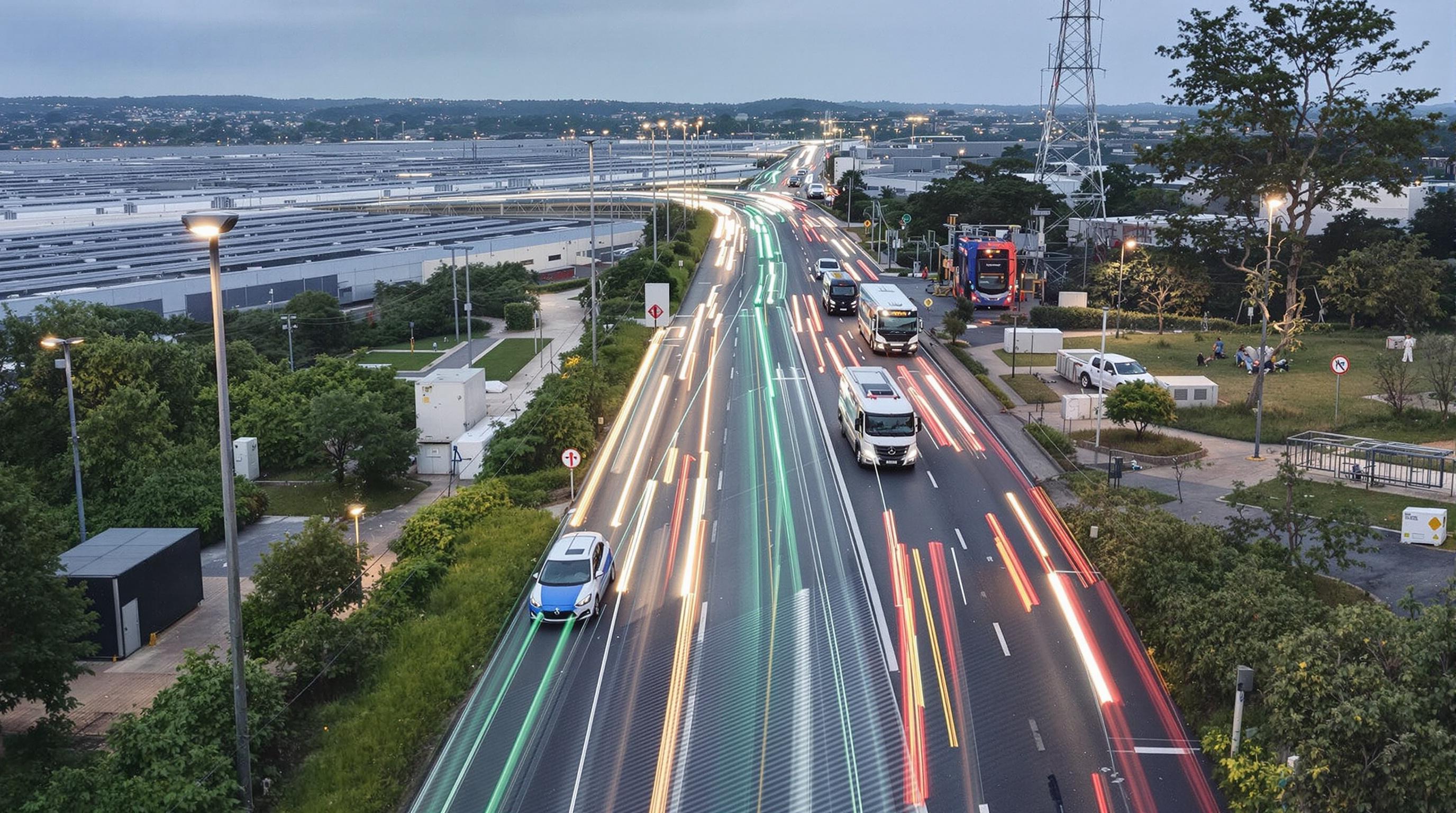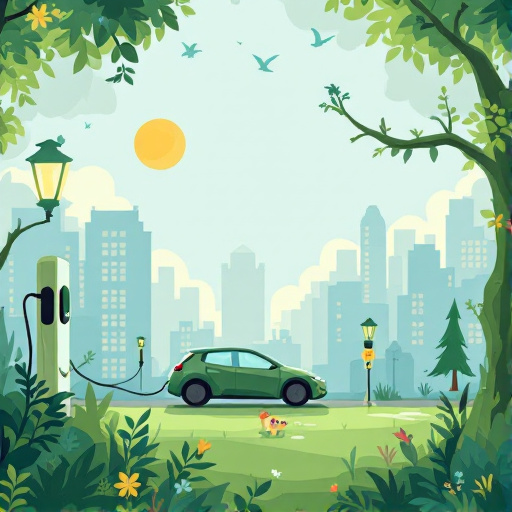Related Articles
- Charged Up! How Electric Vehicles are Reshaping Urban Wildlife Habitats and Biodiversity
- Navigating the Used Car Market: Uncovering the Secrets of 'As-Is' Sales for Savvy Buyers
- The Rise of Electric Car Pop-up Shops: A New Frontier for Urban Retail Experiences
- The Forgotten Art of DIY Car Maintenance: Rediscovering Skills in a Tech-Driven World
- Electric vs. Vintage: The Battle for Enthusiasts' Hearts in the Age of Latest Car Models
- The Rise of the 'Car Review Influencer': How Social Media is Shaping Auto Buying Decisions
Driving Silence: The Unseen Impact of Electric Vehicles on City Noise Pollution and Urban Soundscapes
Driving Silence: The Unseen Impact of Electric Vehicles on City Noise Pollution and Urban Soundscapes
The rise of electric vehicles (EVs) is transforming not only how we drive but also how our cities sound. This article explores the profound yet often overlooked effects of EVs on urban noise pollution and the overall soundscape, shedding light on both the positive and negative consequences.
The Quiet Revolution: An Introduction to Electric Vehicles
Once upon a time, the roar of engines and the honking of horns defined urban soundscapes. Today, cities around the globe are witnessing a revolution: the rise of electric vehicles, or EVs, a technological marvel that promises not just cleaner air, but also a quieter urban environment.
Electric vehicles generate significantly less noise compared to their gasoline counterparts. For example, a traditional combustion engine can produce noise levels of up to 90 decibels, while electric vehicles often operate at around 60 decibels. A study conducted by the University of California, Davis, found that shifting to EVs could reduce urban ambient noise levels by about 25% (He Wang & Xiaoguang Xu, 2020).
The Soundscape of Our Cities
Cities are like orchestras, with each vehicle contributing its unique sound to the symphonic chaos of urban life. When ICEs (Internal Combustion Engines) dominate the roads, their distinct growls and rumbles shape the auditory experience of the urban landscape. But as the tide turns toward electric alternatives, we begin to see a shift in the soundscape — a harmonious blend of technology and tranquility.
Statistics that Speak Volumes
According to the U.S. Environmental Protection Agency (EPA), transportation is responsible for almost 30% of total greenhouse gas emissions, the majority of which stem from road vehicles. However, recent data shows that electric vehicles can save approximately 1.5 billion gallons of gasoline annually, translating to a significant decrease in both air and noise pollution. With the growing adoption of EVs, researchers predict a substantial drop in the negative health impacts caused by noise pollution, which can lead to conditions such as hypertension and cardiovascular diseases (World Health Organization, 2020).
A Quiet Street: Case Studies in Change
Let’s dive into the realm of real-world examples. Consider the city of Oslo, Norway, which has aggressively promoted electric vehicle use and has seen profound effects not just on its air quality but also its sound environment. Streets previously marred by the clamor of diesel trucks and honking taxis are transforming into peaceful boulevards where the gentle hum of EVs is a soothing soundtrack.
Vibrant Cities, Quieter Streets!
Curious about London? The introduction of low-emission zones has propelled the adoption of electric vehicles. In one study, residents living in areas where EVs made up a large percentage of the traffic reported feeling less stressed and more connected to their environment. Isn’t that something? Imagine sipping your morning coffee while listening to the melodious chirping of birds rather than the deafening sound of a bus rumbling by! It’s like living in a nature documentary, minus the wild animals.
But Wait, There's Noise!
Despite the broadly positive narrative surrounding EVs, it’s crucial to acknowledge that their quiet nature has sparked some controversy. The National Highway Traffic Safety Administration (NHTSA) acknowledges that pedestrians, particularly those who are visually impaired, are at greater risk of accidents involving EVs, as these vehicles can often approach silently. In response, regulations now require that EVs produce a minimum sound when traveling at low speeds, leading to the rise of synthesized sounds resembling those of conventional vehicles. Let’s just say, we can now hear “whoosh” instead of “vroom.”
Changing Perspectives: Noise Pollution as a Public Health Issue
As urban planners and policymakers become increasingly aware of noise pollution’s effects on health, the conversation around soundscapes is evolving. Chronic noise exposure has been linked to various health problems, including sleep disturbances and increased stress levels, which in turn can lead to serious medical conditions. By reducing traffic noise through electric vehicle adoption, cities can mitigate some public health risks significantly.
Crafting the Sound of the Future
Urban soundscapes are not static; they are reflections of societal values and technological advancements. Cities like Amsterdam have begun experimenting with different sound environments using both EVs and traditional vehicles to study their impacts on community well-being. Imagine if future cities could become silent havens, where the only sounds you'd hear are laughter, birds chirping, and perhaps some upbeat tunes of a good new coffee shop playlist!
The Art of Sound: Creating a Balanced Acoustic Environment
With the advent of quiet streets comes the consideration of how to enhance the auditory experience in urban environments. Beyond merely reducing noise, the focus could shift towards enriching soundscapes through architectural designs, green spaces, and sound art installations.
Exciting initiatives in cities like Barcelona integrate technology and nature by placing sound installations in parks, while also encouraging the use of electric buses that move silently. With a blend of creativity and technology, cities can foster environments that promote peace and enhance community vitality in ways we’re only beginning to fathom.
The Long-Term Vision: Sustainability Meets Serenity
The impact of electric vehicles transcends mere noise reduction; it progressively changes how we view urban spaces altogether. With cleaner air and quieter streets, the concept of sustainability is woven with a sense of serenity, diversifying the experience of urban living. Picture a city where children play freely in the streets, where conversations unfold without competing with car horns, and where evening strolls become delightful escapades.
Hey, Remember the Good Old Days?
Remember when the sound of engines roaring ruled the day? Sure, it had its thrills. But let’s be honest: the fantasy of driving a muscle car has often clashed with the reality of living in a noisy metropolis. Now, we can drive around in both style and silence. Glaring headlights and noise pollution are fading into the background, leaving room for the emergence of a kinder, gentler urban experience.
Conversations in the Community
For urban residents, this transformation is often a double-edged sword. While many embrace the tranquility that comes with electric vehicles, there is concern about losing the vibrancy that sound brings to city life. Community dialogues are now essential — how can we honor the cultural aspects of sounds in urban environments while embracing the benefits of silence? What a delightful quagmire of opinions we have here!
The Young Voices of Change
As an 18-year-old content writer navigating my world of social media and advocacy, it’s our generation that will inevitably shape the future of urban living. It’s not just about the cars we drive but the cities we inhabit. So let’s put on our thinking caps and advocate for sustainable soundscapes that celebrate both innovation and heritage. And who wouldn’t want to live where harmony and happiness reign supreme?
In Conclusion: Driving into a Sonic Future
So, what’s the bottom line on this drive towards electric vehicles? The switch to EVs is not merely a transportation change; it's a profound cultural shift with far-reaching impacts on urban soundscapes. From enhanced public health outcomes to rekindling our connection to nature, electric vehicles stand as a vehicle for positive change—a harmonious driver in transforming our cities into better versions of themselves.
As technology advances and more people make the shift, let’s keep the conversation going. Let’s question, critique, and celebrate this sonic revolution. After all, in this orchestra of life, would you rather play the cacophony of a thousand engines or the soothing strains of a quieter, kinder world? The future is our canvas; let’s paint it with the sounds we desire.




